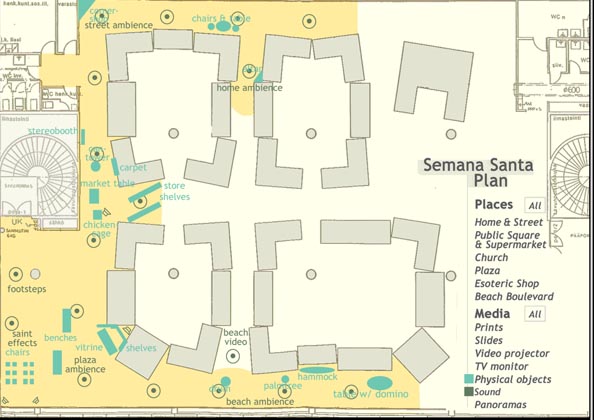

Sound was used in exhibition as a tool of immersion. A living, pulsing, three dimensional soundscape with moving sound sources and virtual acoustics was created with latest digital signal processing hardware, Creamware Pulsar, and custom software. The software has been developed for the project in collaboration with Audio Riders Ltd.
The audio system was capable of positioning multiple audio sources in a 3d listening space created with up to 18 individual output channels. 18 of the sources were physical inputs, e.g. microphones, and all sources were possible to freely route through DSP algorithms like auralization filters or reverberation. Microphone signals triggered sampled sounds or controlled the video presentations.
Existing positional audio methods like vector panning designed for conventional theatres and listening rooms were used in the central plaza part. In addition to that, speakers were located along the corridors of the museum so that visitor was able to hear a group of virtual Venezuelans walking around and passing by.
Computer controlling the audio environment of the exhibition as a whole is the only way to allow proper use of contrast and silence. One could for example hear the people heading for the church before a mass and then find him/herself alone on the beach, hearing only sounds of the sea mixed with low, muffled celebration from a distance.
The suond environment was designed and implemented by Media Lab student Perttu Hämäläinen.